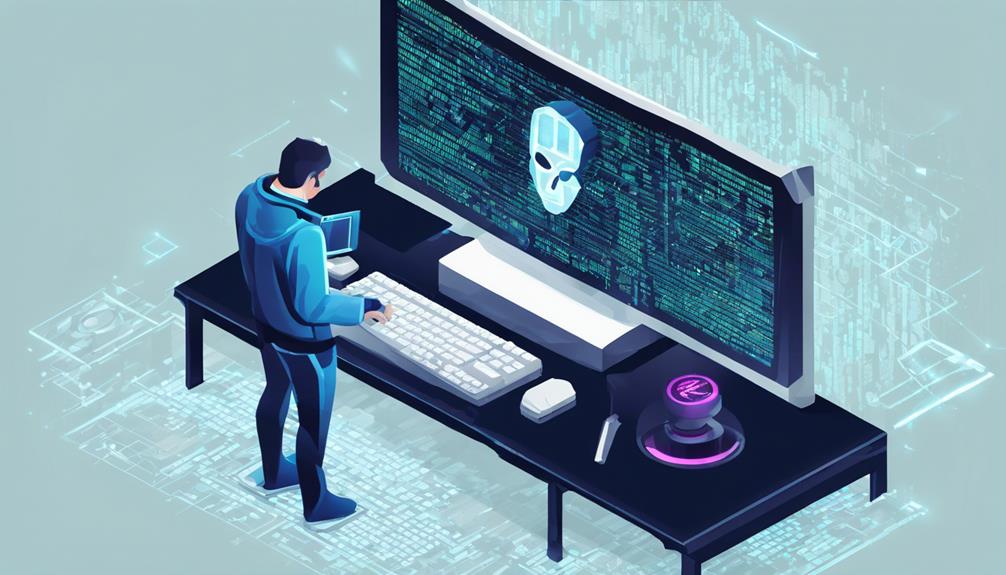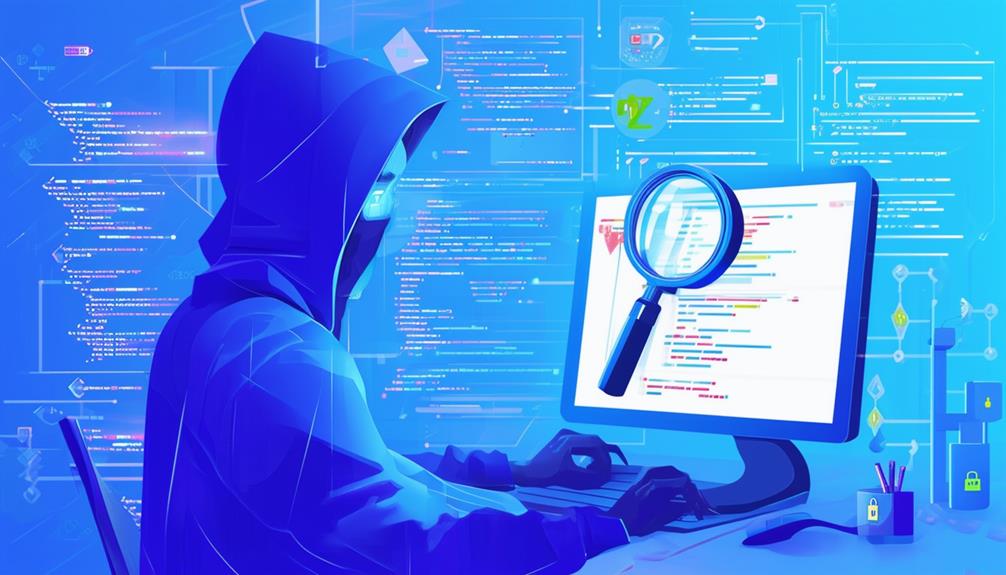Gain a thorough understanding of vulnerability analysis in ethical hacking by watching the full course. Learn to identify weaknesses in systems and networks for enhanced cybersecurity. The course covers key points such as utilizing vulnerability assessment tools like Nikto and OpenVAS, classifying severity of vulnerabilities, and practical defense strategies for LAN security. It also aligns with the CEH exam, version 11, preparing you thoroughly. Real-world examples and security trends analysis provide practical insights for fortifying digital defenses. Enhance your skills in ethical hacking and stay ahead of evolving cyber threats.
Key Takeaways
- Comprehensive coverage of vulnerability scanning methodologies.
- Practical defense strategies for LAN protection.
- Aligned with CEH exam (312-50) version 11.
- Prepares for certification exam success.
- Gain theoretical knowledge and practical skills in ethical hacking.
Course Overview
In this course overview, learners will be introduced to the fundamentals of vulnerability analysis in the context of ethical hacking. Taught by instructor Lisa Bock, the course explores the critical aspects of vulnerability assessment, emphasizing the importance of security in defending the LAN.
Through the examination of tools like Nikto and OpenVAS, students will learn methods for identifying weaknesses in systems and networks.
With a duration of 1 hour and 38 minutes, the course equips participants with the skills needed to assess and reduce organizational risk effectively.
Key Learning Points

Key insights gained from vulnerability analysis illuminate critical weaknesses within systems and networks, aiding in the proactive fortification of organizational security measures. By utilizing vulnerability assessment tools and various vulnerability analysis methodologies, security professionals can effectively pinpoint vulnerabilities and prioritize solutions to enhance system resilience.
Understanding challenge chapters such as vulnerability scanning and exploring strategies to address weaknesses that attackers might exploit are essential components of vulnerability analysis. Through the identification of vulnerabilities and the classification of their severity using vulnerability scoring systems, security teams can streamline their remediation efforts and make certain that the most critical issues are addressed promptly.
Leveraging resources like SANS.org, Security Magazine, and the Exploit Database facilitates in-depth vulnerability research, enabling organizations to stay ahead of emerging threats and protect their systems from potential breaches. Implementing a robust vulnerability analysis process is fundamental in safeguarding against cyber threats and maintaining the integrity of digital infrastructure.
Instructor Insights

Moving forward into the domain of Instructor Insights, learners in the Ethical Hacking: Vulnerability Analysis course benefit from the expertise of Lisa Bock, a cybersecurity author and Certified Ethical Hacker.
Here are three key insights learners can expect from Lisa Bock:
- Thorough Coverage: Lisa Bock explores in-depth vulnerability scanning methodologies, equipping learners with the knowledge to identify weaknesses in systems using tools like Nikto and OpenVAS.
- Practical Defense Strategies: With Lisa Bock's guidance, students learn effective techniques for defending local area networks (LANs) against potential cyber threats, enhancing their practical skills in the field of cybersecurity.
- Exam Readiness: Lisa Bock ensures that the course aligns with the CEH exam (312-50) version 11, preparing students to confidently tackle the certification exam with challenge chapters that test their understanding of vulnerability assessment and ethical hacking principles.
Through Lisa Bock's guidance, learners not only gain theoretical knowledge but also practical skills essential for a successful career in the field of ethical hacking and vulnerability analysis.
Real-World Examples

Exploring real-world examples in vulnerability analysis sheds light on the practical implications and significance of identifying system weaknesses in cybersecurity. By studying these instances, professionals can understand how vulnerabilities are leveraged by attackers to exploit systems and launch breaches. Real-world examples serve as an important learning tool, enabling experts to recognize and rectify similar weaknesses within their own networks. This proactive management approach is vital in fortifying defenses against cyber threats.
Analyzing past incidents not only provides insight into the methods used by attackers but also highlights the importance of staying vigilant and continuously updating security measures. By learning from these real-world cases, organizations can enhance their resilience to potential attacks.
Additionally, the practical application of vulnerability analysis through real-world examples underscores the necessity of a thorough security strategy that addresses existing weaknesses before they can be exploited. By staying informed and proactive, businesses can better protect their systems and data from malicious intent.
Security Trends Analysis

A systematic examination of security trends is essential for organizations to stay ahead of evolving cyber threats and vulnerabilities. By analyzing security trends, security professionals can gain valuable insights into the tactics employed by malicious actors, enabling them to enhance their security defenses effectively.
Here are three key benefits of security trends analysis:
- Understanding Emerging Vulnerabilities: Security trends analysis helps in identifying new security risks and vulnerabilities that may not be apparent through traditional vulnerability analysis methodologies.
- Enhancing Proactive Measures: By keeping track of security trends, organizations can proactively implement measures to mitigate potential threats before they escalate, strengthening their overall security posture.
- Informing Vulnerability Management: Security trends analysis informs effective vulnerability management strategies, allowing organizations to prioritize their efforts based on the most pressing security risks in the current threat landscape.
Frequently Asked Questions
What Is Vulnerability Analysis in Ethical Hacking?
Vulnerability analysis in ethical hacking involves systematically identifying, evaluating, and mitigating weaknesses within systems to enhance security. It plays a significant role in preemptively securing against cyber threats by proactively identifying and addressing potential vulnerabilities before malicious actors exploit them.
What Are the Five Types of Vulnerability Assessment?
In the domain of vulnerability assessment, five essential types stand out: network-based, host-based, application-based, wireless network, and database assessments. These assessments target specific areas of security vulnerabilities, providing a holistic approach to fortifying systems. How can these assessments benefit your organization?
What Kind of Vulnerability Do Ethical Hackers Identify?
Ethical hackers identify various vulnerabilities in systems, including security controls weaknesses and system design flaws. Their expertise lies in uncovering potential entry points that malicious attackers could exploit, helping organizations fortify their defenses against cyber threats.
What Are the Three Criteria for Assessing Vulnerability?
When evaluating vulnerability, prioritization is key. Criteria like priority, severity, and scope guide this process. These factors help determine the impact of vulnerabilities and enable effective risk management strategies to be established.
Conclusion
To sum up, the thorough ethical hacking course on vulnerability analysis offers valuable insights into identifying weaknesses in security systems. By examining real-world examples and analyzing current security trends, participants can gain a comprehensive understanding of potential vulnerabilities.
This course provides practical knowledge and skills that can be applied to enhance cybersecurity measures. Overall, it is a must-watch for anyone looking to strengthen their defenses against cyber threats.









